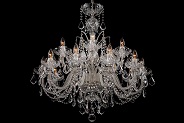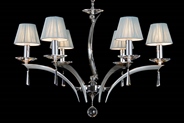Crystal Versus Glass
The terms crystal and glass differ from country to country. For the Western world, the word "crystal" usually indicates the presence of lead. According to the European Union rules, glass products containing less than 4% of lead oxide are labelled as "glass". Next, products containing more than 10% of lead oxide are labelled as "crystal" and products containing more than 30% of lead oxide are labelled as "high-lead crystal". In the USA, the situation is different – the glass is labelled as "crystal" if it contains at least 1% of lead oxide. In the Czech Republic, the term "crystal" is used for any exquisite, high quality glass. Therefore "leaded crystal" means that the crystal contains more than 24% of lead oxide.
The presence of lead softens the glass and makes it more suitable for cutting and engraving. Lead increases the weight of the glass and causes the glass to refract light. Glass used for making figurines contains up to 49% of lead in order to achieve maximum malleability. If crystal contains less than 24% of lead, it has a higher proportion of barium oxide which ensures that the light refracts well.
The difference between glass and crystal can be seen by a naked eye. Apart from glass, a crystal chandelier casts a spectrum of colours around the room. If the content of lead is higher, the chandelier is more sparkling.
More information about Czech glass
Would you like to know more about Czech glass, its history and our chandelier production technology? More information on these pages:






